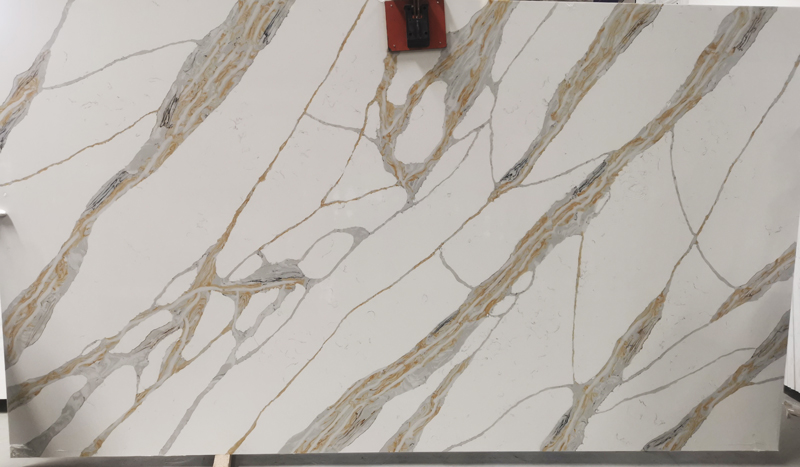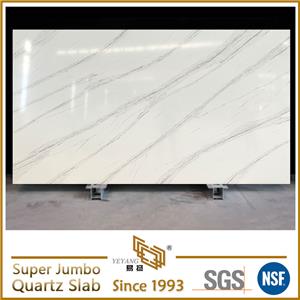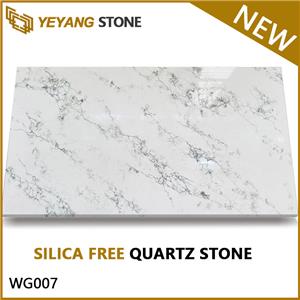What has Trump's Tariff Brought to the Lives of American Homeowners
What has Trump's Tariff Brought to the Lives of American Homeowners?
When the Trump administration officially imposed a 34% tariff on Chinese commodities on April 9, 2025, there is few people expected that this policy would directly impact the kitchen renovation plans of ordinary American homeowners. From single-family villas in Florida to bathroom renovations in New York apartments, the price of quartz countertops has soared 40% in the past three weeks, and the production capacity gap of local alternatives has put the market in a dilemma. This tariff war is reshaping the cost logic and consumer choices of the US construction market in a subtle and profound way.

Shifts in the Building Materials Market Under Tariff Influence
China, the world's major producer of quartz surface products, had long dominated the mid-to-high-end market share in the United States. With the new tariffs in effect, the landed price of imported Calacatta quartz slabs rose by approximately $40 per square meter, compelling American wholesalers to navigate the delicate balance between price increases and supply cuts.
For domestic quartz surface product companies in the United States, the tariff policy seemed to herald 'good news'. On one hand, tariffs elevated the cost of imported quartz surface products, making American domestic products more price-competitive and aiding in market share expansion. On the other hand, tariff barriers also resulted in an industry-wide cost increase. Some small companies reliant on imported quartz surface products exited the market due to cost pressures, optimizing the industry's competitive landscape. Leading companies like Quartz Shares were poised to further solidify their market position with their scale advantages and cost control capabilities.
However, behind the 'good news for local companies' lay hidden concerns. Tariff policies introduced instability into the global supply chain, heightening the difficulty and cost of raw material procurement for American quartz surface product companies. Although China is the world's largest glass fiber manufacturer, the withdrawal of Owens Corning increased the global supply chain's dependence on China, with tariff costs anticipated to be borne by manufacturers and customers. This meant American quartz surface product companies might face higher raw material costs, impacting their product pricing and profit margins.
Wholesalers' Survival Game and Market Shocks
For American quartz surface product wholesalers, this tariff war resembled a high-risk poker game. Tariffs caused an increase in the cost of Chinese quartz surface products, elevating wholesalers' procurement costs. To maintain profit margins, wholesalers had to raise product prices, potentially affecting their market competitiveness. Some wholesalers might opt to reduce their purchase of Chinese quartz surface products and seek suppliers from other countries, but this entailed new risks and challenges, such as unstable supply chains and inconsistent product quality. For instance, some wholesalers attempted to turn to suppliers in Turkey or India but soon discovered that the compressive strength of products from these regions was insufficient, doubling the customer complaint rate. Moreover, the cutting capacity in transit locations like Vietnam had reached saturation, extending the delivery cycle from 45 days to 90 days, causing numerous renovation projects to be shelved. This tariff war posed a daunting test for American suppliers. To address these challenges, many suppliers and contractors have turned to trusted partners like Yeyang Stone. We have established a crisis response system with a complete preparation plan from production material preparation to shipment, ensuring your projects stay on schedule and on budget.

Yeyang Calacatta Gold Quartz Slab B4037-1
The Double Dilemma of Ordinary Homeowners: Cost and Choice
The ultimate cost of tariffs fell upon the shoulders of ordinary homeowners. For ordinary Americans, the most direct impact of Trump's tariff policy was the increase in housing prices and renovation costs. As a crucial support for the real estate and renovation markets, the cost increase within the building materials industry inevitably trickled down to end consumers. As a significant component of the building materials industry, the price increase of quartz surface products directly led to higher renovation costs.
Consider a commercial roofing material supplier in New York, where up to half of the building materials in its projects originated from China. The new tariffs would directly double the cost, not only pressuring businesses but also disrupting the industry and potentially driving up housing prices. For ordinary homeowners, this meant they had to bear higher costs when buying or renovating, increasing their economic burden.
Furthermore, the tariff policy might affect the supply and demand balance in the US construction market. Rising costs could cause some construction projects to be postponed or canceled, which in turn impacted employment and economic growth. Simultaneously, rising housing prices might also dampen the demand for housing purchases among some consumers, having a negative effect on the real estate market.
Current Market Scenario
Firstly, homeowners' budgets have been squeezed. The average price of standard kitchen countertops has risen from US 3,200toUS4,500, prompting many families to opt for cheaper laminates, which might result in a 5%-8% drop in property resale value. Secondly, design homogeneity has become an issue: due to reduced supply of popular patterns like Calacatta and Arabescato produced in China, the proportion of solid-color quartz surface panels produced in the United States has surged from 30% to 65%, with designers complaining that 'kitchens are starting to look the same'.
So, who truly benefits from this tariff war? On the surface, domestic quartz surface product companies in the United States received policy protection, but the actual beneficiaries were few:
A handful of leading brands: Companies like Cambria occupied the high-end market with their scale advantages, but their product prices were far beyond the budget of ordinary families.
Logistics middlemen: The tariff compliance consulting business of the Port of Long Beach, California, had increased by 300%, and bonded warehouse rent had doubled.
Conclusion: The Economic Narrative Behind a Quartz Slab
When a couple in Miami forwent their favorite Calacatta island due to budget constraints, and when a developer in Houston switched to low-end slabs to control costs, the tariff war transformed from macro policies to specific quality of life choices. In this game, there were no absolute winners; only those who adapted could survive.
📥 Contact us to obtain a cost optimization solution.
💬 Leave a message to share your experience: How did tariffs alter your home improvement plan?




